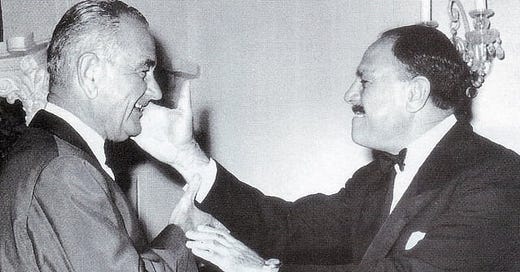In May 2025, after 87 tense hours of high-intensity conflict, it was the United States once again stepping in to broker a ceasefire between India and Pakistan. But this time, the strategic undertones were far more complicated. Pakistan’s increasingly close alignment with China, across defense, technology, and crisis coordination, was no longer a subtext; it was the substructure. For seasoned observers, this shift echoed a pivotal moment six decades earlier, when the aftermath of the 1965 war forced Pakistan to navigate between U.S. pressure and the emerging pull of China. Then too, a ceasefire was brokered, alliances were tested, and the future of great power mediation in South Asia quietly began to fracture.
But to understand 1965, we must first revisit 1962
The India-China war of 1962 was a seismic moment in South Asia’s strategic landscape. As Indian forces reeled from their defeat in the Himalayas, Ayub Khan recognized an opening, a chance to tilt Pakistan’s foreign policy eastward. While India moved swiftly into a tighter embrace with the United States, Pakistan began quietly cultivating its relationship with China. This culminated in the 1963 Sino-Pakistan boundary agreement, in which Pakistan ceded territory in the Shaksgam Valley to China, formalizing borders in a way that carried long-term geopolitical weight. For Pakistan, this was not just cartographic diplomacy; it was strategic signaling, a move to diversify its security partnerships and reduce dependence on an increasingly reluctant Washington. This realignment would shape the context in which Pakistan entered the 1965 war and the decisions it made after.
The Ceasefire That Redefined Pakistan’s Strategic Choices
In the aftermath of the 1965 India-Pakistan War, diplomacy moved fast, but under immense pressure and shifting allegiances.
Indian Prime Minister Lal Bahadur Shastri accepted a ceasefire on September 21, and President Ayub Khan followed suit the next day, against the advice of Zulfikar Ali Bhutto, who had argued for leveraging military momentum. Both countries turned, not to the West or the UN alone, but to the Soviet Union, accepting Moscow’s role as third-party mediator in what had long been seen as a bilateral or UN-mandated dispute: the status of Kashmir.
This mediation culminated in the Tashkent Declaration, signed on January 10, 1966. It committed both sides to withdraw troops to pre-August 5 positions and work toward restoring diplomatic relations. But that declaration, seemingly a neutral step forward, was underscored by growing fractures in regional and global alignments.
Just a month before Tashkent, Ayub Khan made a December 1965 visit to the United States, hoping to repair strained ties and refocus U.S. attention on Kashmir. This trip had been previously canceled by President Lyndon B. Johnson earlier that April, amid growing Cold War entanglements. Now, in person, Ayub was met with cold clarity.
Source: Ayub Khan and Lyndon Johnson, December 1965, a cordial moment at the edge of a strategic divergence.
Johnson’s message was unambiguous: If Pakistan wanted any future with the U.S., it had to distance itself from China.
This ultimatum marked a decisive moment in Pakistan’s strategic thinking. It revealed the constraints of alliance politics during the Cold War and foreshadowed Pakistan’s long and complex engagement with China, an alignment that, ironically, would deepen precisely because of this warning.
In private, however, U.S. President Johnson told Ayub that he “understood certain relationships just as a wife could understand a Saturday night fling by her husband so long as she was the wife.”
*Memorandum of Johnson’s second private meeting with Ayub on Dec 15, 1965 is cited in Dennis Kux, Disenchanted Allies; 168
For students of history and practitioners of policy alike, this moment is more than archival. It is a window into how ceasefires are not just military pauses, they are pivots in alliance management, power recalibration, and contested futures.
A Legacy of Strategic Balance
In the current Trump 2.0 landscape, where great power rivalries are sharper and alliances more transactional, Pakistan continues to do what it has done best for decades: balance. The recent luncheon meeting, post-May 2025 Indo-Pak crisis, between Pakistan’s Field Marshal, General Asim Munir and President Trump is testament to Islamabad’s enduring ability to keep the U.S. engaged, even as its strategic alignment with China grows deeper and more institutionalized.
Much like Ayub Khan’s visit to Lyndon Johnson in December 1965, this meeting echoed a familiar rhythm in Pakistan’s statecraft, engaging Washington at moments of strategic inflection, to manage perceptions, reset expectations, and preserve maneuvering space.
From the post-Tashkent recalibration to today’s dual-track diplomacy, Pakistan has not merely survived geopolitical pressure, it has leveraged it. Navigating between Washington’s shifting expectations and Beijing’s steady partnership, Pakistan has managed to preserve strategic flexibility without becoming anyone’s satellite. It is a balancing act few states have mastered and one Pakistan has performed with quiet brilliance.
What began as a forced pivot in 1965 matured into a sophisticated balancing strategy, positioning Pakistan not as a passive actor in global alignments, but as an agile state maneuvering through the fractures of international order.
🖋️ This piece draws on archival material from my doctoral research. I’ll be unpacking more strategic turning points like this in upcoming posts. Subscribe for deeper dives into South Asia’s nuclear history, diplomatic tightropes, and third-party mediations that changed the region's course.




![r/HistoryPorn - President Ayub Khan of Pakistan gives the American president Lyndon B. Johnson a friendly slap, December 1965 [1024x682] r/HistoryPorn - President Ayub Khan of Pakistan gives the American president Lyndon B. Johnson a friendly slap, December 1965 [1024x682]](https://substackcdn.com/image/fetch/$s_!QVpL!,w_1456,c_limit,f_auto,q_auto:good,fl_progressive:steep/https%3A%2F%2Fsubstack-post-media.s3.amazonaws.com%2Fpublic%2Fimages%2F40e3b27f-fbb3-47ec-acb6-3a62dc1924f9_640x426.jpeg)
Thank you